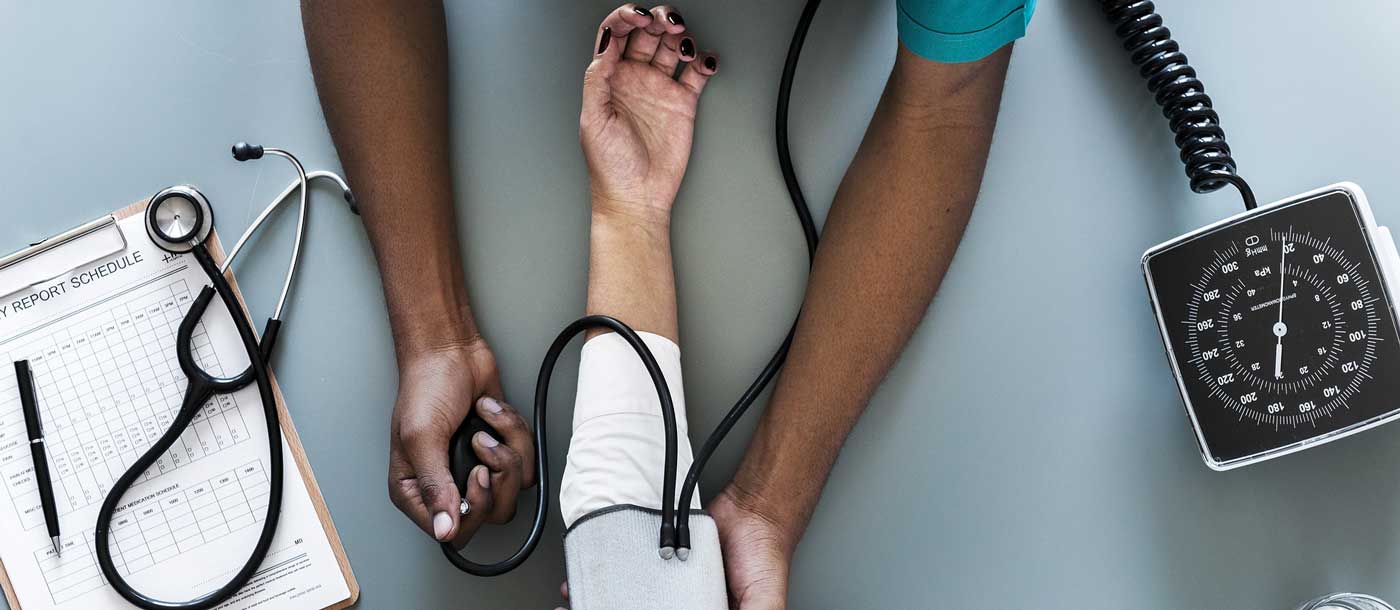Understanding Blood Pressure

What Is Blood Pressure?
As your heart beats to pump blood throughout your body, the blood pushes against the sides of the vessels through which it flows. This pushing is known as blood pressure, and too much pressure can exert a strain on your heart and arteries. Blood pressure is measured in millimeters of mercury (mmHg) and is always represented by two numbers, one above the other. For example, a blood pressure reading of 120/80 mmHg would be described as “120 over 80” and would represent blood pressure at the top of the normal range. The upper number represents systolic pressure, the highest level of pressure that is reached when your heart beats to pump blood through your body. The lower number represents diastolic pressure, the lowest level of pressure that is reached when your heart relaxes between beats. You can measure your blood pressure at home with a blood pressure cuff, or a health professional can do it for you at a doctor’s office or clinic.
- What Is Blood Pressure?
- Blood Pressure Chart
- Understanding Blood Pressure Readings
- The Facts About High Blood Pressure
- High Blood Pressure in Adults
- Blood Pressure Facts and Advice
- High Blood Pressure (Hypertension)
- Blood Pressure Facts and Tips
Keeping Blood Pressure in a Healthy Range
To maintain good health, it is important to keep your blood pressure in the normal range. High blood pressure (also called hypertension) can lead to life-threatening conditions such as kidney disease, peripheral artery disease, heart attack, or stroke. You might have high blood pressure and not know it because it does not always present distinct symptoms. For this reason, high blood pressure is known as a “silent killer,” and keeping track of your numbers is a positive step toward maintaining good health.
The normal range for blood pressure shows a systolic (upper) number of less than 120 and a diastolic (lower) number of less than 80. Elevated blood pressure is when the systolic number is between 120 and 129 and the diastolic number is less than 80. Stage 1 hypertension is diagnosed when the systolic (upper) number is between 130 and 139 or when the diastolic number is between 80 and 89. Stage 2 hypertension is indicated by a systolic number of 140 or higher or a diastolic number of 90 or higher. A hypertensive crisis, requiring immediate medical attention, occurs when the systolic number is higher than 180 and/or the diastolic number is higher than 120.
- What High Blood Pressure (Hypertension) Can Do
- Guide to High Blood Pressure (Hypertension)
- Effects of High Blood Pressure
- What’s to Know About High Blood Pressure?
- High Blood Pressure: Risks and Treatment
- High Blood Pressure Symptoms and Treatment
- Overview: High Blood Pressure (Hypertension)
- High Blood Pressure Symptoms
- Blood Pressure Advice for a Healthier Life
How to Lower Your Blood Pressure
If you have elevated or high blood pressure, you can take steps to lower it. If your doctor prescribes medication for high blood pressure, be sure to take it as directed. Additionally, you can make lifestyle changes to lower your blood pressure.
Weight loss is one of the most important steps toward lowering your blood pressure. The DASH diet (short for “dietary approaches to stop hypertension”) is recommended for weight loss and for treating high blood pressure. Not so much a diet plan as a guideline for healthy eating, DASH recommends cutting back on salt while loading up on vegetables and fruits, fish and poultry, whole grains, nuts, legumes, and low-fat dairy products.
In addition to weight loss, other lifestyle changes can positively affect your blood pressure. Regular exercise is crucial; even 30 minutes of walking, done regularly, can lower your blood pressure. Reduce sodium intake: Avoid salty foods, and cut back on added salt. Alcohol consumption is a factor to keep in check, too. Cut back to no more than one drink per day for women or two drinks per day for men. And if you are a smoker, you should quit smoking. Although it’s hard to do, this is important for your health. In addition, it’s important to reduce stress in pursuit of healthy blood pressure. Be sure to make time for rest and relaxation.